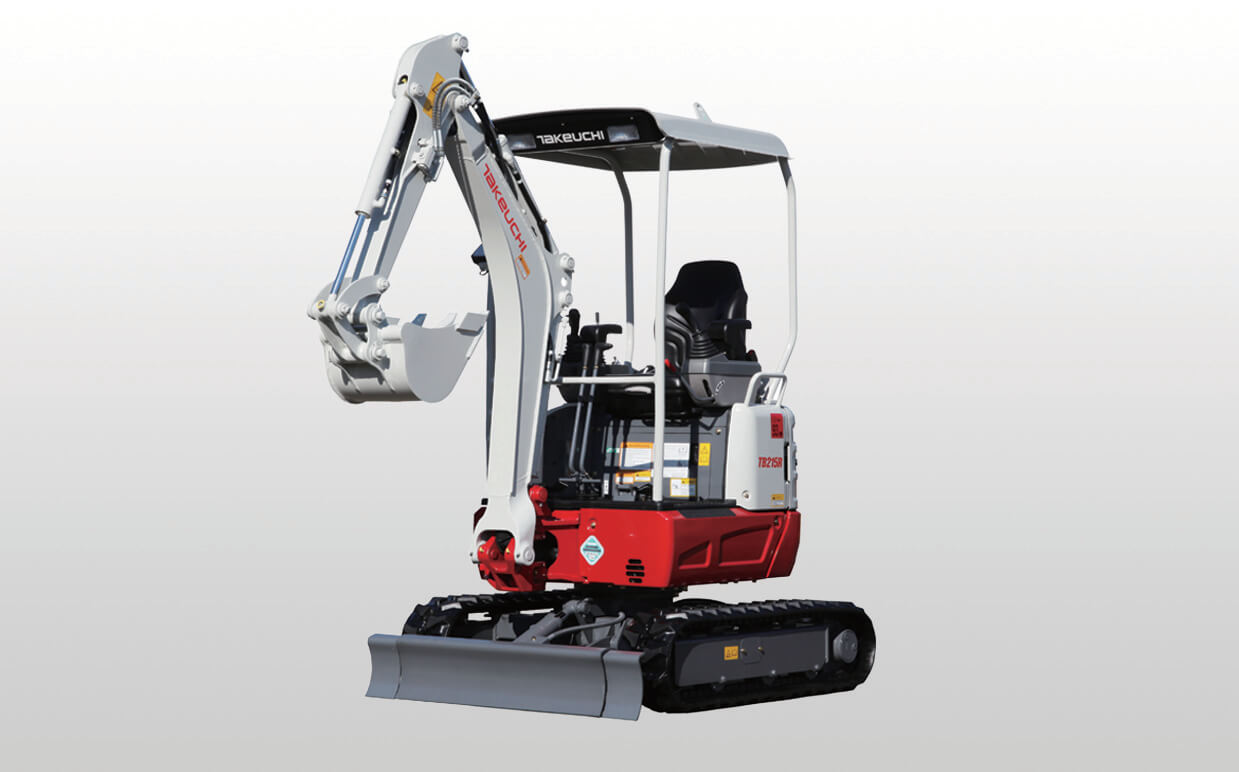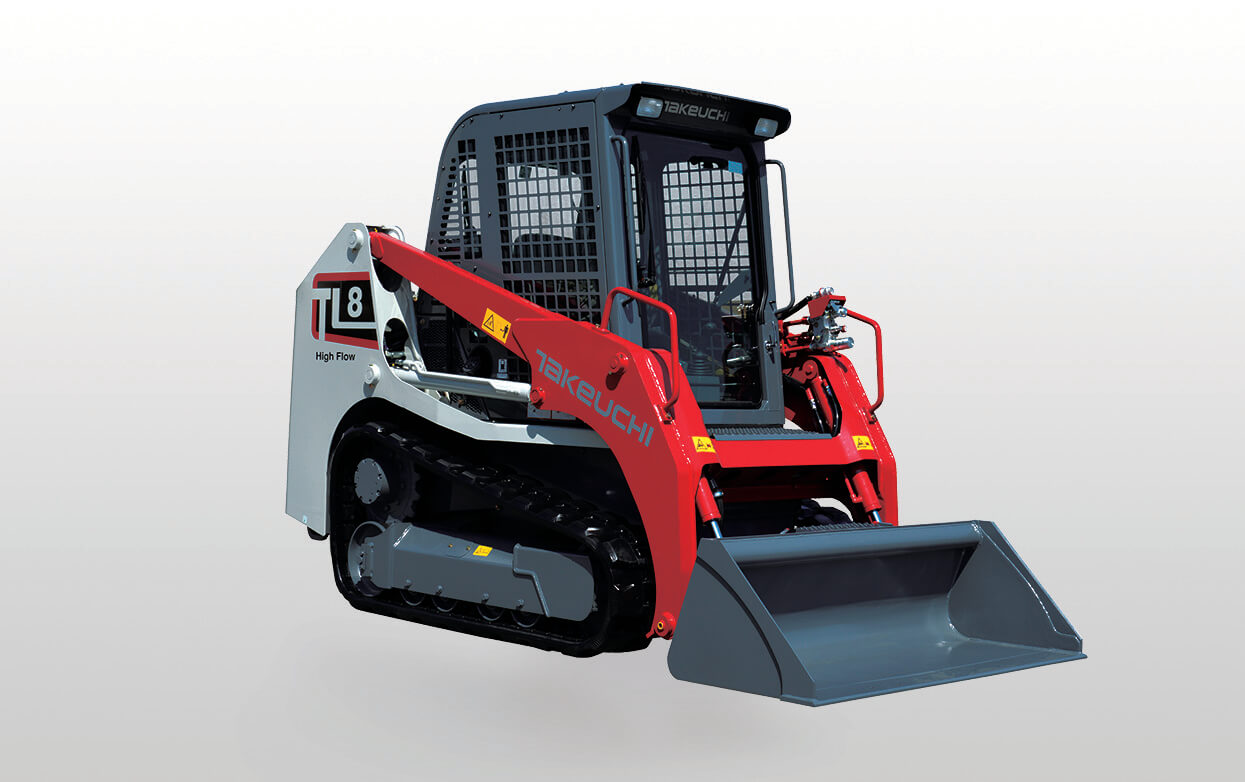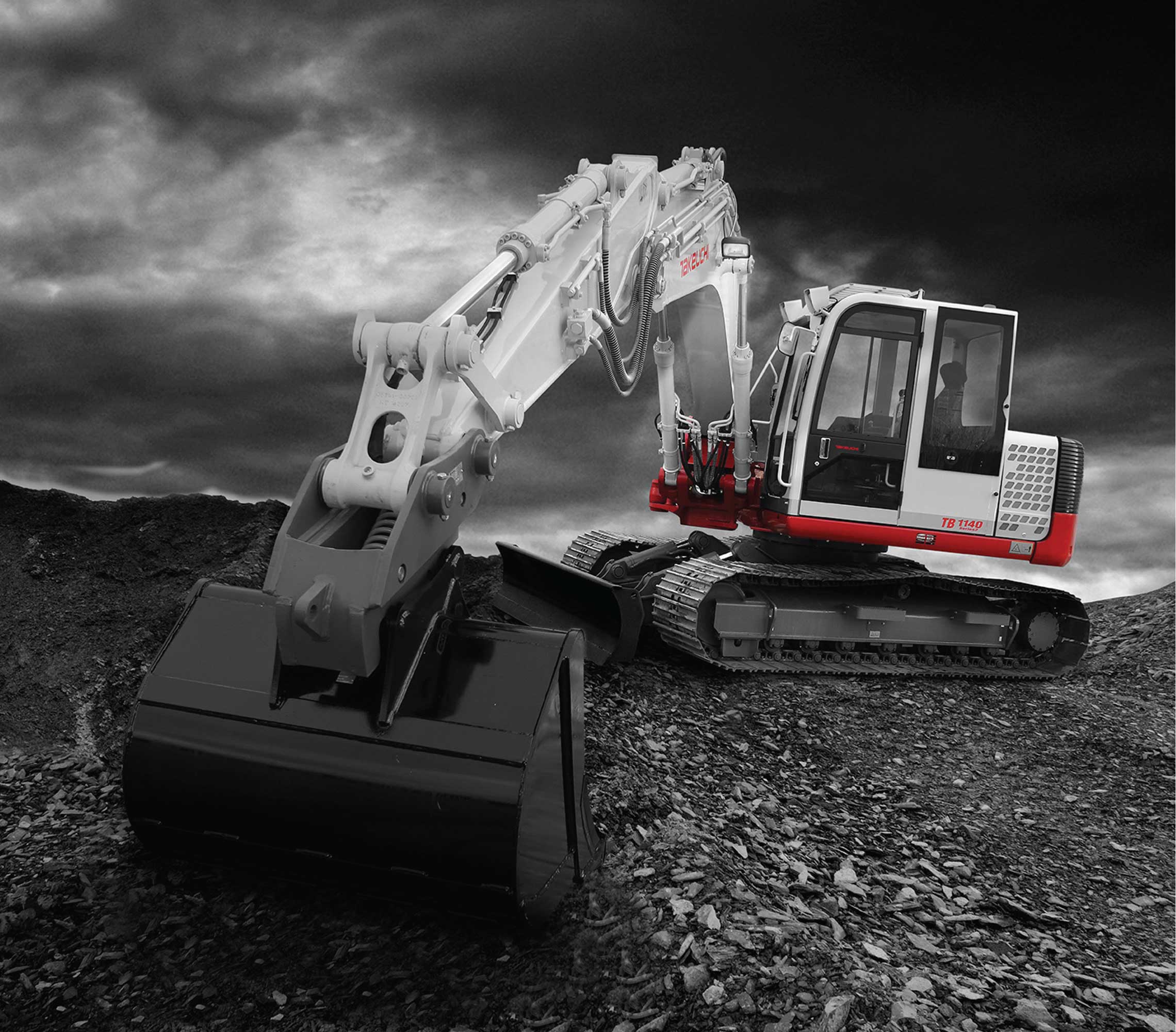TAKEUCHI
Construction equipment manufacturer Takeuchi faced growing pressure to streamline its development processes. The company chose Dassault Systèmes’ to provide an integrated platform for product design, analysis and production.
GROUNDBREAKING SUCCESS
Takeuchi Mfg. Co. is a company of firsts: the manufacturer of the world’s first compact excavator in 1971 and inventor of the first track loader in 1986, an ideal engineering vehicle for rough terrain operations. For over 50 years, Takeuchi has worked its way to the top of its trade thanks to technological knowhow, earning it a reputation for delivering rugged, high quality products. As a result, the company is considered one of the world’s most popular brands at construction sites. More than 90% of its equipment is exported to customers in Asia, North America and Europe. “Takeuchi compact excavators were used to help tear down the Berlin Wall in 1989,” the Takeuchi Development Department team said.
The rise in infrastructure spending is a boon to the heavy construction equipment industry, which is projected to grow at a compound annual growth rate of 6.8% from 2015 to 2020. Earthmoving equipment is the world’s fastest growing segment in the heavy construction equipment sector.1 “Different construction needs result in a plethora of machine configurations that we have to produce and deliver in the shortest time possible to satisfy our customers’ specific requirements,” the Takeuchi Development team said. “The trend is toward smaller, tougher and better performing equipment than in the past with a focus on product compliance with ever more stringent exhaust regulations. To meet these challenges, we first needed to improve our internal processes and our information system, which was a collection of different and often incompatible solutions that hampered our agility.”
INCREASING NUMBER OF CUSTOMER REQUESTS
For example, the company has three series of compact excavators: standard, short tail swing and zero swing models. The total number of variations resulting from different options and specific customer requests, can easily amount to several hundred models. Variations in product specifications have increased four-fold and the number of parts managed can easily exceed 10,000.
Historically, Takeuchi relied on a 2D CAD solution for product design and another to generate the bills of materials (BOM), but it was starting to feel the limits of its existing software environment. “Lack of data-sharing between design data and BOM data created errors when managing product specifications making it difficult for us to rapidly release new products,” the Development team said.
To develop its compact excavators, Takeuchi designers work in parallel, each on a different part of the vehicle: lower shovel structure, upper shovel structure, and attachments. “The upper shovel structure requires particular attention because it is attached to the engine and to other equipment such as the hydraulic equipment, control equipment, and various electric circuits,” the team explained. “Since space is limited in compact excavators, enabling designers to work together helps them take into account everyone’s needs when positioning circuits or components. In a 2D CAD drawing, we didn’t have a complete view of the entire product, which sometimes resulted in unexpected interferences between some of the parts and moving components. When problems were identified, the only way to correct them was by repeating the design process until we got it right. We can avoid this trial and error process if everyone works on the same 3D model, where interferences and errors are more easily visible and detected by the system. Moreover, testing a 3D virtual model eliminates the need for physical prototypes.”
Takeuchi adopted a 3D CAD solution 10 years ago but was not satisfied with the way it handled large assemblies. “Many of our assemblies comprise several thousand parts and our previous 3D software had serious performance issues, which made it impossible to work with,” the team said.
Takeuchi sought a more unified and robust solution to meet its many challenges. The company chose Dassault Systèmes’ CATIA, ENOVIA and SIMULIA applications to design its products and manage their variants. These applications are the foundation of the industry solution experience Simple Solution Selection. “We can take advantage of the modular approach enabled by Dassault Systèmes’ offer which enables us to create more product variants with a fewer number of parts,” the Development team said. “Reusing existing parts helps us reduce lead times for new product introductions.”
We can take advantage of the modular approach enabled by Dassault Systèmes’ offer, which enables us to create more product variants with a fewer number of parts.

REAL-TIME ACCESS IMPROVES COLLABORATION
Dassault Systèmes’ platform offers a modular architecture with great configuration capabilities. This is due to CATIA, the robust design application for large assembly models Takeuchi is accustomed to working with and to ENOVIA application that improves collaboration between designers and other project stakeholders by giving them real-time access to the same 3D model. “When one person makes a modification, others can see this change and provide feedback right away,” the team said. “Engineering changes are handled in a secure manner thanks to the ability to declare in ENOVIA whether a design can be modified or not. You can’t imagine how much time we save and how many errors are avoided thanks to better collaboration.”
With Dassault Systèmes’ platform, Takeuchi employees have a single, unified environment for all product-related activities. “With this platform, we avoid a patchwork-like system of different solutions from different vendors, which is a nightmare to coordinate,” the team said. “Our design and manufacturing information is integrated in the BOM, making going from one to the other seamless and fast. BOMs are automatically created from the design data, drastically reducing the risk of human error and optimizing the product development process.”
In addition to its product development designers, Takeuchi’s other departments such as production control and production engineering need to access design data as well. “Other departments, too, can easily access product information,” the team said. “As a matter of fact, the number of people currently working with the solution has more than doubled since we first implemented this environment, which demonstrates the value this platform has brought to our company.”
A MORE EFFICIENT WORKFLOW
Working with 3D virtual mockups also has facilitated the analysis and testing process. “We can now test and correct our designs using the SIMULIA application before submitting them for manufacture,” the team said. “Before we adopted the solution, we created 2D drawings, then developed the 3D model and finally performed analyses on this model. Now, we test the 3D model directly and automatically generate the 2D drawings from a validated 3D design. This workflow is faster and more efficient,” the team said.

HEAT FLOW, DOCUMENTATION AND PRODUCTION SIMULATION
In the future, Takeuchi would like to use the platform’s applications to analyze heat flow, a particularly important factor when designing compact excavators. “Proper ventilation must be considered in our designs because an accumulation of heat can damage the equipment’s circuits. If we can take this into account early in the design process, it will help make our equipment more efficient and competitive.”
Takeuchi also would like to use 3D in downstream processes such as in the workshop to create production documentation. “CATIA Composer can access the latest design data to create part manuals and assembly instructions or to generate part lists for our workshops,” the Development team said. “This would eliminate the need to produce work instructions in multiple languages since 3D is universal. Assembling a product using a 3D model as a guide is so much more visual and effective. We also are thinking of introducing DELMIA to improve our manufacturing efficiency by simulating the production process and shop floor layout before physically installing any equipment. Finally, 3D also can be used by our sales force to show prospects virtual models of our products and different configuration possibilities.”
Takeuchi’s current success with 3DEXPERIENCE and its plans for the future have put the company on a path to further improving its product development efficiency. “This will enable us to continue producing what some people call the ‘Mercedes of construction equipment’,” the team concluded.
Focus on Takeuchi Mfg. Co., Ltd.
Manufacturer of construction machinery.
Products: standard track, wheel and electric compact excavators, zero swing compact excavators, track loaders and track carriers, industrial agitators, mixers, dissolver blenders, kneaders and environmental equipment
Revenue: US$ 587 million (JPY 69,893 million (2015/2)
Employees: 698
Headquarters: Nagano, Japan
For more information www.takeuchi-mfg.co.jp/english
Focus on TOYOTSU SYSCOM CORPORATION
As a member of Toyota group and Toyota Tsusyo group, TOYOTSU SYSCOM CORPORATION supports its customers by providing services and solutions in information, communication and technology for the mutual benefit of people and societies around the world.
For more information www.tsyscom.co.jp
